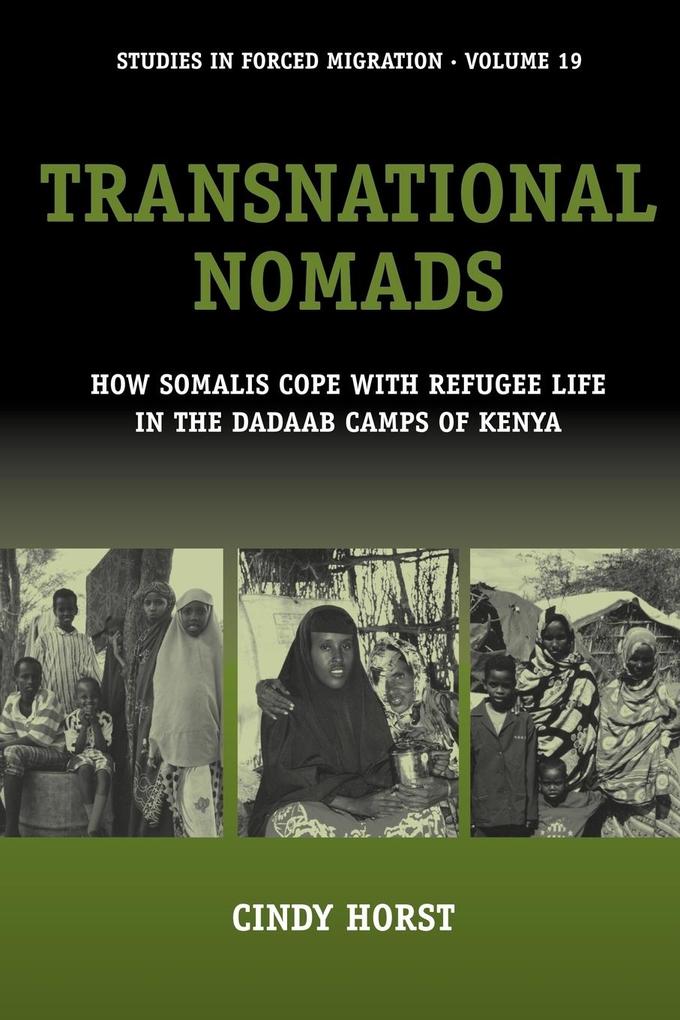
Zustellung: Fr, 10.01. - Di, 14.01.
Versand in 6 Tagen
VersandkostenfreiBestellen & in Filiale abholen:
There is a tendency to consider all refugees as 'vulnerable victims': an attitude reinforced by the stream of images depicting refugees living in abject conditions.
This groundbreaking study of Somalis in a Kenyan refugee camp reveals the inadequacy of such assumptions by describing the rich personal and social histories that refugees bring with them to the camps. The author focuses on the ways in which Somalis are able to adapt their 'nomadic' heritage in order to cope with camp life; a heritage that includes a high degree of mobility and strong social networks that reach beyond the confines of the camp as far as the U.S. and Europe.
This groundbreaking study of Somalis in a Kenyan refugee camp reveals the inadequacy of such assumptions by describing the rich personal and social histories that refugees bring with them to the camps. The author focuses on the ways in which Somalis are able to adapt their 'nomadic' heritage in order to cope with camp life; a heritage that includes a high degree of mobility and strong social networks that reach beyond the confines of the camp as far as the U.S. and Europe.
Inhaltsverzeichnis
List of Figures, Maps and Tables
Acknowledgements
Maps
Abbreviations
Chapter 1. At a Distance? An Introduction
Chapter 2. A Nomadic Heritage: Past Ways of Coping With Insecurity Amongst the Somali
Chapter 3. Refugee Life in the Camps: Providing Security or Sustaining Dependency?
Chapter 4. Transnational Livelihoods: The Role of Taar and Xawilaad
Chapter 5. Buufis: Imagining or Realising Migration to the West
Chapter 6. Historical and Transnational Approaches to Refugee Studies
Glossary
Bibliography
Index
Acknowledgements
Maps
Abbreviations
Chapter 1. At a Distance? An Introduction
Chapter 2. A Nomadic Heritage: Past Ways of Coping With Insecurity Amongst the Somali
Chapter 3. Refugee Life in the Camps: Providing Security or Sustaining Dependency?
Chapter 4. Transnational Livelihoods: The Role of Taar and Xawilaad
Chapter 5. Buufis: Imagining or Realising Migration to the West
Chapter 6. Historical and Transnational Approaches to Refugee Studies
Glossary
Bibliography
Index
Produktdetails
Erscheinungsdatum
05. November 2007
Sprache
englisch
Seitenanzahl
252
Autor/Autorin
Cindy Horst
Verlag/Hersteller
Produktart
kartoniert
Gewicht
371 g
Größe (L/B/H)
229/152/14 mm
Sonstiges
Paperback
ISBN
9781845455095
Entdecken Sie mehr
Bewertungen
0 Bewertungen
Es wurden noch keine Bewertungen abgegeben. Schreiben Sie die erste Bewertung zu "Transnational Nomads" und helfen Sie damit anderen bei der Kaufentscheidung.










